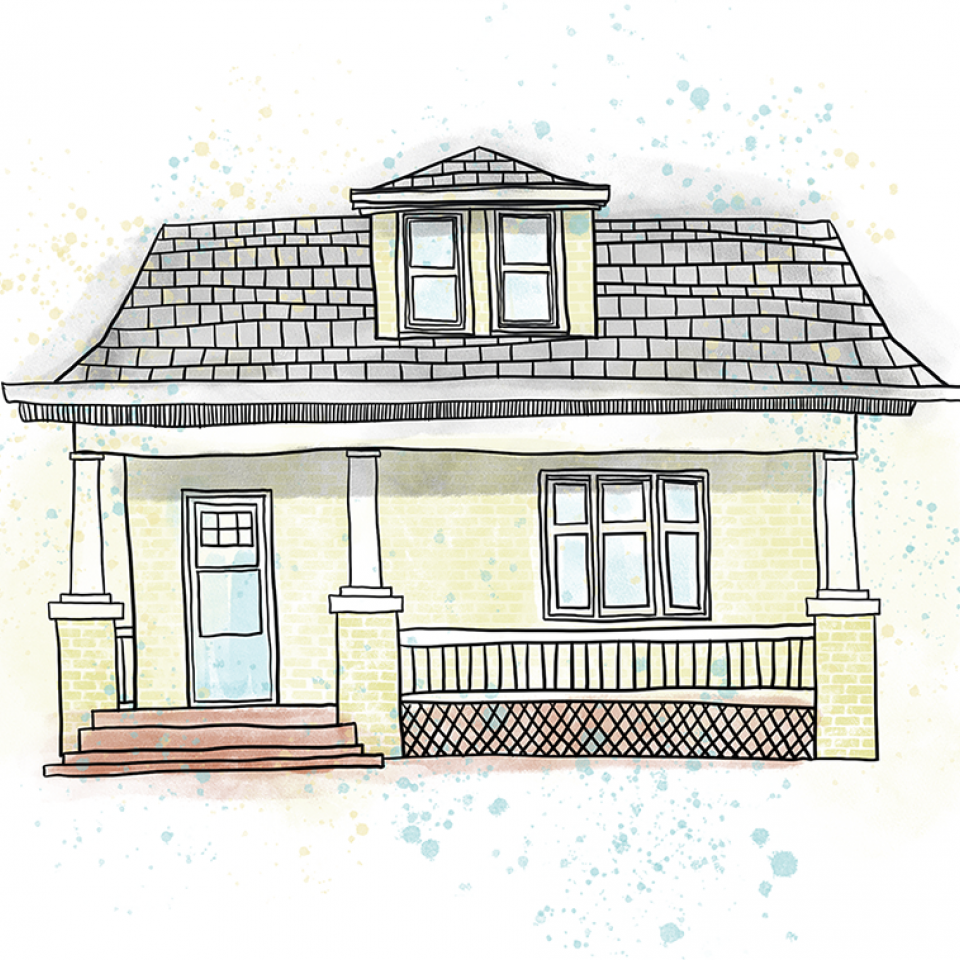In the 1950s, Mary “May” Macdonnell, BA’10, MA’11, was a retired classics professor maintaining a prim and proper house at 104 Queen’s Crescent (now Bader Lane). Research by Kingston architectural historian Jennifer McKendry suggests she bought the graceful one-and-a-half-storey brick house when it was built in the 1920s, shortly after she made history as one of the first two female professors hired by Queen’s.
In 1956, Professor Macdonnell agreed, somewhat reluctantly, to let Joyce Milligan, Arts’58, share her home. Normally, Professor Macdonnell took in only one Queen’s student, but was persuaded to accommodate Ms. Milligan, her current roomer’s friend, as well. She knew that, even in the ’50s, it wasn’t always easy for women to find housing near campus.
“She made an exception,” says Ms. Milligan. “She offered to let me in. I think she regretted it; she only ever wanted one.”
Ms. Milligan had spent her first two years at Queen’s in residence at Ban Righ Hall, her second year as a proctor. In a way, she could thank the professor for that lodging as well.
In 1911, Professor Macdonnell had been on the executive of the Queen’s Alumnae Association that began the fight to build Ban Righ, the university’s first women’s residence. The university’s board of trustees was lukewarm to the project, but gave in when the Alumnae Association raised $80,000, half the building’s cost, through teas, bake sales, and bridge parties. Ban Righ opened in 1925.
Ms. Milligan’s arrangement with Professor Macdonnell was for room, not board. She had a tiny bedroom “with a straw mattress that would crunch when you came in late at night,” but she continued to take her meals at Ban Righ, just down the street. Professor Macdonnell offered one bit of formal hospitality, however: every afternoon “she rang a little bell and … you would go down for tea in her parlour,” recalls Ms. Milligan. “It was very proper.”
Ms. Milligan remembers Professor Macdonnell as “a very buttoned-up retired Latin teacher.” But, she says, “she was nice; you couldn’t help but like her.”
Ms. Milligan’s social life was a sore point for her landlady, though Professor Macdonnell’s dismay was never voiced aloud. When Ms. Milligan went out on dates with the Royal Military College cadet who would become her husband, Professor Macdonnell “would throw open the [bedroom] window and let the snow blow in,” says Ms. Milligan. “She let me know that we should be studying and not dating.”
Ms. Milligan’s father had expected her to attend his alma mater, McGill, but she “just liked the idea of a nice little university on a lake with bagpipes.” She had grown up in Cornwall listening to her uncle’s regiment, the Pipes and Drums of the Stormont, Dundas and Glengarry Highlanders. “I needed the pipes,” she says.
Her break with tradition started a new one. Her younger brother studied medicine at Queen’s and many of the family’s generations since are Queen’s alumni.
After leaving the university in 1957, Ms. Milligan found herself back on campus in 1960 when her then-husband joined Queen’s first MBA class. She found work in the Douglas Library and fondly remembers colleagues from her six years there, including longtime Chief Librarian Henry Pearson Gundy.
Ms. Milligan hopes to attend her 65th class reunion this fall, but she won’t be able to visit her old digs at 104 Queen’s Crescent. Professor Macdonnell sold the home to the university in 1966 and it was razed more than 30 years later, likely to make way for the construction of Watts Hall early this century.
Queen’s “was a part of my blood; I could have stayed there forever – I loved it,” Ms. Milligan says. “But it was my years [at Ban Righ] and then Queen’s Crescent that introduced me to life at Queen’s.”
Tell us about the University District house you lived in and the memories you made.


